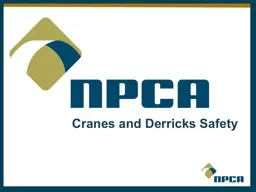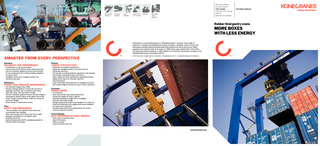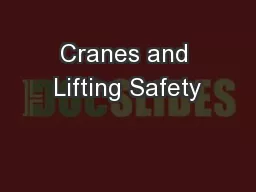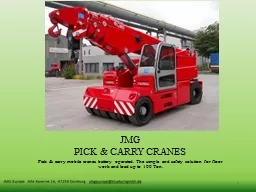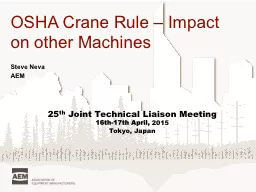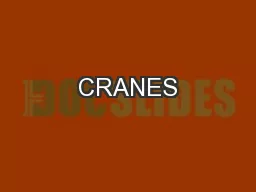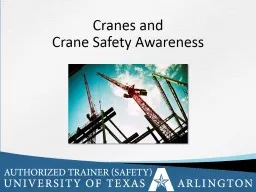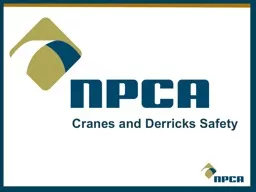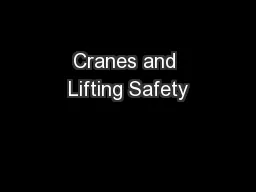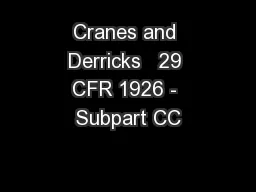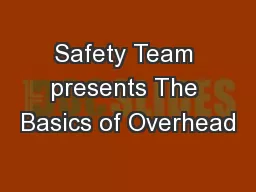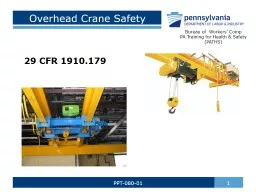PPT-Cranes and Derricks Safety
Author : calandra-battersby | Published Date : 2017-06-10
OSHA Cranes and Derricks Subpart CC Effective Date Nov 10 2017 Signal Person Qualifications Qualifications of Maintenance and Repair Workers Training Hoisting
Presentation Embed Code
Download Presentation
Download Presentation The PPT/PDF document "Cranes and Derricks Safety" is the property of its rightful owner. Permission is granted to download and print the materials on this website for personal, non-commercial use only, and to display it on your personal computer provided you do not modify the materials and that you retain all copyright notices contained in the materials. By downloading content from our website, you accept the terms of this agreement.
Cranes and Derricks Safety: Transcript
Download Rules Of Document
"Cranes and Derricks Safety"The content belongs to its owner. You may download and print it for personal use, without modification, and keep all copyright notices. By downloading, you agree to these terms.
Related Documents

